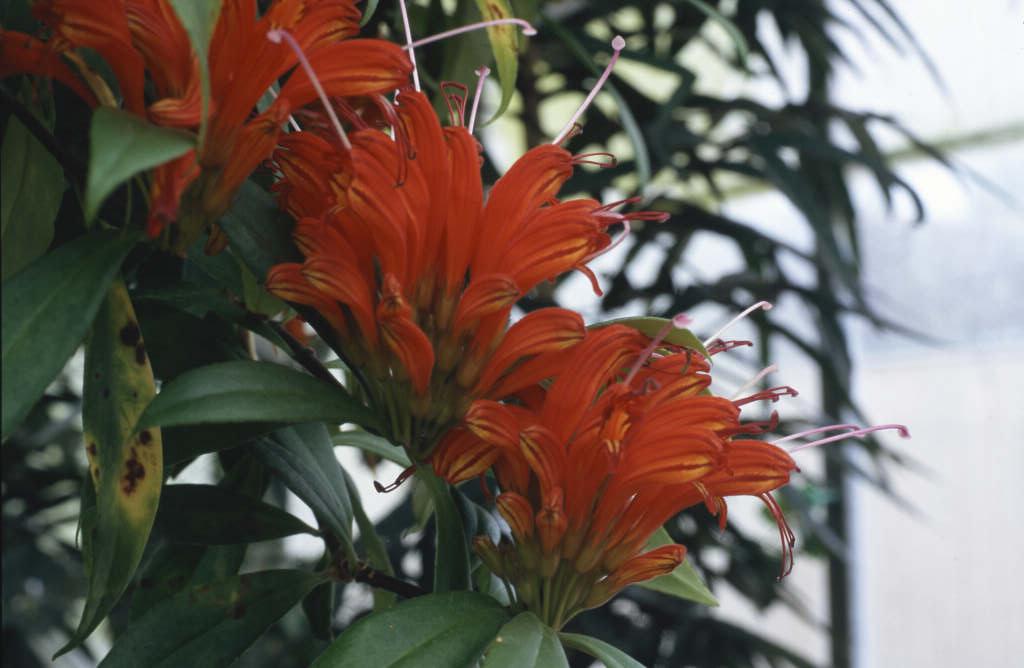Aeschynanthus pulcher
red bugle vine
A tender epiphytic evergreen climber to 75cm in height, with aerial rooting stems bearing glossy, oval, dark green leaves 4.5cm long, and terminal clusters of 6-8 hooded, bright red tubular flowers 6cm long, with yellow throats, produced from summer to winter
Synonyms
Aeschynanthus 'Jack Lobbianus'Aeschynanthus javanicus hort.
see moreAeschynanthus lobbianus
Aeschynanthus parvifolius
Aeschynanthus lanceolatus
Aeschynanthus pulchra
Aeschynanthus lamponga
Aeschynanthus radicans lobbianus
Aeschynanthus boschianus

Size
Ultimate height
0.5–1 metresTime to ultimate height
2–5 yearsUltimate spread
0.1–0.5 metresGrowing conditions
Moisture
Moist but well–drainedpH
Acid, Neutral, AlkalineColour & scent
| Stem | Flower | Foliage | Fruit | |
| Spring | Green | |||
|---|---|---|---|---|
| Summer | Red | Green | ||
| Autumn | Red | Green | ||
| Winter | Red | Green |
Position
- Partial shade
Aspect
West–facing or East–facing
Exposure
Sheltered Hardiness
H1ABotanical details
- Family
- Gesneriaceae
- Native to GB / Ireland
- No
- Foliage
- Evergreen
- Habit
- Climbing
- Genus
Aeschynanthus can be climbers, subshrubs or trailing perennials with simple, fleshy, evergreen leaves and showy tubular flowers, some with a contrasting calyx
- Name status
Correct
- Plant range
- Indonesia
How to grow
Cultivation
Grow as a house or conservatory plant indoors in a peat-free houseplant compost. Position the container in bright, filtered light for best growth and flowering. Water freely and apply a half strength, general liquid feed monthly from mid spring to late summer. Water sparingly in winter. See houseplant cultivation for further information
Propagation
Propagate by softwood cuttings in spring or semi-ripe cuttings in summer
Suggested planting locations and garden types
- Houseplants
- Sub-tropical
- Conservatory and greenhouse
Pruning
Trim back weak or overly-long shoots as necessary
Pests
Diseases
Generally disease-free
Get involved
The Royal Horticultural Society is the UK’s leading gardening charity. We aim to enrich everyone’s life through plants, and make the UK a greener and more beautiful place.